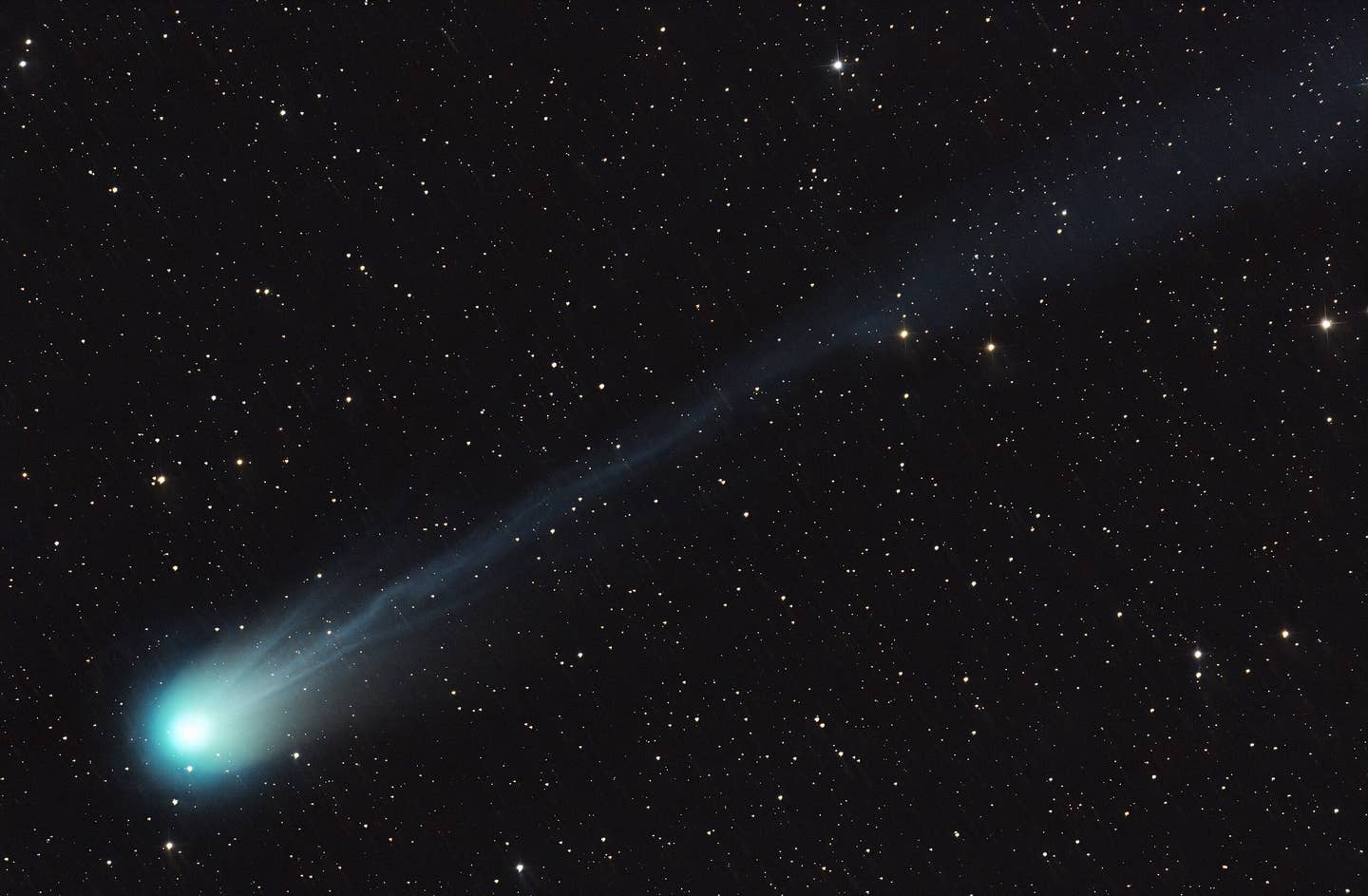Did comets bring Earth its water? Scientists find new evidence
For centuries, people have wondered where Earth’s vast oceans came from. Our planet didn’t form with much water, yet today it’s covered in it.

New telescope observations show water in comet 12P/Pons–Brooks has the same chemical fingerprint as Earth’s oceans. (CREDIT: By Nielander – Own work, CC0 4.0)
For centuries, people have wondered where Earth’s vast oceans came from. Our planet didn’t form with much water, yet today it’s covered in it. New research using powerful radio telescopes is bringing scientists closer to solving this puzzle, pointing to comets as likely couriers that delivered water to a young Earth billions of years ago.
Comets as Cosmic Time Capsules
Comets are often described as frozen leftovers from the birth of the Solar System about 4.5 billion years ago. These icy wanderers preserve ancient material that never became part of planets, making them natural time capsules. When they swing near the Sun, frozen gases inside begin to vaporize, forming a glowing cloud called a coma. Studying this gas helps astronomers understand not only the comet itself but also conditions in the early Solar System.
A recent breakthrough came from observations of comet 12P/Pons–Brooks, a Halley-type comet that circles the Sun roughly every 71 years. Using the Atacama Large Millimeter/submillimeter Array (ALMA) in Chile, scientists captured detailed maps of both ordinary water (H₂O) and heavy water (HDO, which contains the isotope deuterium) in the comet’s coma. By comparing the two, they calculated a deuterium-to-hydrogen ratio—known as the D/H ratio—that turned out to be almost identical to the ratio found in Earth’s oceans.
Why the D/H Ratio Matters
The D/H ratio acts like a chemical fingerprint. Water formed in different regions of the Solar System carries distinct isotopic signatures, shaped by the local temperature and chemistry. A high level of deuterium usually points to ice formed in extremely cold, distant regions, while a lower level suggests a warmer origin closer to the Sun.
The ALMA team measured a D/H ratio of about 1.7 × 10⁻⁴ in 12P/Pons–Brooks, a value strikingly similar to ocean water on Earth. Martin Cordiner of NASA’s Goddard Space Flight Center, who led the study, emphasized the importance of the finding: “Comets like this are frozen relics left over from the birth of our Solar System. Our new results provide the strongest evidence yet that at least some Halley-type comets carried water with the same isotopic signature as that found on Earth.”
This marks the lowest such ratio ever measured in a comet of this class and strengthens the idea that comets may have been key suppliers of water to our young planet.
Related Stories
- Scientists discover mysterious object that may be the oldest comet ever detected
- The Sun’s secret role in shaping comet paths and meteor showers
Other Clues from the Outer Solar System
12P isn’t the only comet hinting at this connection. Astronomers also detected water vapor from 29P/Schwassmann-Wachmann 1, an unusual comet orbiting between Jupiter and Neptune. What makes 29P stand out is that water vapor was observed at an enormous distance from the Sun, where it’s normally too cold for ice to sublimate. This suggests that some comets hold especially volatile materials capable of releasing gas even in frigid outer space.
Taken together, these discoveries reveal that Earth’s water could have come from more than one family of comets—those originating in the Kuiper Belt beyond Neptune and others from the distant Oort Cloud. Each detection adds another piece to the puzzle, showing how complex the story of Earth’s oceans really is.
Filling in the Missing Pieces
For decades, scientists have debated whether comets or asteroids were the main source of Earth’s water. Earlier measurements of cometary water often showed D/H ratios very different from ocean water, casting doubt on the comet theory. But as instruments improve, researchers are uncovering examples that match more closely.
Stefanie Milam, another co-author of the 12P study, explained how mapping both H₂O and HDO directly in the coma was essential. “By mapping both H₂O and HDO in the comet’s coma, we can tell if these gases are coming from the frozen ices within the solid body of the nucleus, rather than forming from chemistry or other processes in the gas coma,” she said.
This clarity is critical. If the water is truly primordial, locked inside the comet’s core since the Solar System formed, then it’s a direct link to the past.
Searching Beyond Earth
Understanding how Earth acquired its water also helps astronomers look beyond our own Solar System. If comets are efficient transporters of water, then exoplanets orbiting other stars might also receive similar deliveries. This could increase the odds of finding habitable worlds elsewhere.
Each new comet observation builds a map of water’s journey across the Solar System. As telescope technology advances, scientists expect to spot water vapor in even more distant and faint comets. These discoveries don’t just explain why Earth is a blue planet—they also guide the search for life in the universe.
Practical Implications of the Research
These findings reshape how we understand Earth’s earliest history. If comets like 12P/Pons–Brooks truly carried water that mirrors our oceans, then impacts from such objects may have been crucial in making Earth habitable. This supports the idea that life’s essential ingredients could have arrived from space, carried by icy travelers.
For humanity, this knowledge doesn’t just answer where our water came from; it also expands the search for life by showing where else in the cosmos water-rich worlds might exist.
Future missions targeting comets could reveal even more about how life on Earth—and possibly elsewhere—got its start.
Research findings are available online in the journal Nature Astronomy.
Note: The article above provided above by The Brighter Side of News.
Like these kind of feel good stories? Get The Brighter Side of News' newsletter.



